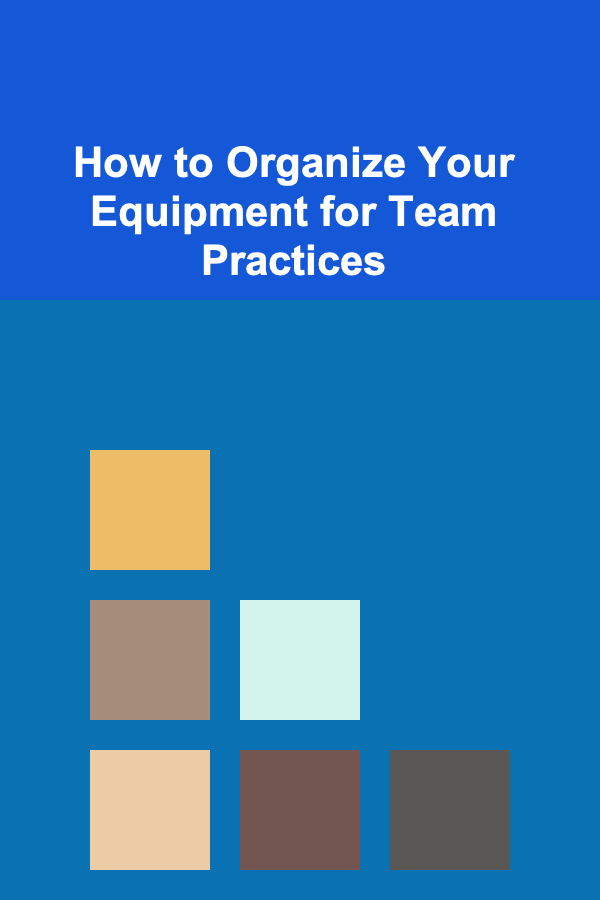
A Beginner's Guide to Utilizing Online Marketplaces for Buying and Selling
ebook include PDF & Audio bundle (Micro Guide)
$12.99$7.99
Limited Time Offer! Order within the next:

The rise of online marketplaces has fundamentally transformed the way we buy and sell goods. Whether you're looking to declutter your home, start a small business, or find unique products, online platforms offer endless opportunities. With the right approach, you can leverage these platforms to streamline your buying and selling process, reach a global audience, and even generate a sustainable income.
In this actionable guide, we'll walk you through the essentials of using online marketplaces for buying and selling. We'll cover the different types of platforms available, how to effectively list items for sale, tips for making smart purchases, and how to build your reputation as a seller.
Understanding Online Marketplaces
What is an Online Marketplace?
An online marketplace is a digital platform where multiple sellers can offer their products or services to buyers. These platforms connect sellers with potential customers, providing a convenient environment to make transactions, while handling aspects like payment processing, customer service, and sometimes even shipping logistics.
Examples of well-known online marketplaces include:
- E-commerce giants like Amazon, eBay, and Walmart Marketplace.
- Niche platforms like Etsy (for handmade or vintage items) and Poshmark (for second-hand fashion).
- Peer-to-peer platforms like Facebook Marketplace and Craigslist.
- Mobile apps such as Depop and OfferUp for local sales.
Each platform serves a specific niche, offering various advantages depending on the types of products you're interested in buying or selling.
How Online Marketplaces Work
Online marketplaces typically operate as intermediaries. When a seller lists a product, the platform ensures the product reaches potential buyers through search features, ads, or even email marketing campaigns. When a buyer makes a purchase, the platform usually handles payment processing, taking a small commission from the sale price.
As a seller, you'll benefit from a ready-made audience without having to invest in building your own e-commerce website. As a buyer, you have access to a vast array of goods from sellers around the world, often with competitive pricing and convenience.
How to Get Started as a Seller
1. Choose the Right Marketplace
The first step is choosing the right platform for your goods. Each online marketplace has its own rules, fees, and customer base, so it's important to pick one that aligns with your product category and selling goals.
- Amazon is great for selling new or in-demand products to a global audience but charges high fees and requires meeting certain standards.
- eBay caters to both new and used products and allows for auctions, which can be an exciting way to sell.
- Etsy is ideal for handmade, vintage, or unique products with a focus on craftsmanship.
- Facebook Marketplace and Craigslist are perfect for local sales with minimal fees.
- Poshmark is popular for fashion and accessories, allowing sellers to reach a community of style-conscious buyers.
2. Set Up Your Seller Profile
Once you've chosen a marketplace, the next step is to set up your seller profile. This involves providing basic information about your business or personal selling account, including your contact details, business name (if applicable), and payment preferences.
- Create a Professional Username: Your username or business name should reflect the type of products you're selling.
- Write an Engaging Bio: Share your story or describe your product line to establish trust with potential buyers.
- Link Payment Options: Set up your payment gateway (e.g., PayPal, bank account) so you can receive payments for your sales.
3. Create High-Quality Listings
Creating a high-quality listing is critical for attracting potential buyers. A well-crafted listing includes clear, accurate, and appealing details that showcase your products.
- Clear and Accurate Descriptions: Provide a thorough description of your item. Mention dimensions, materials, colors, and any other pertinent details.
- Professional Photos: Photos are the first thing potential buyers will notice, so ensure you use high-quality images. Take multiple shots from different angles and ensure the lighting is good. If you're selling clothing, show the item being worn.
- Competitive Pricing: Research similar items on the platform and price your products competitively. Don't forget to factor in fees and shipping costs.
4. Set Shipping and Return Policies
For physical products, shipping and return policies play a crucial role in customer satisfaction. Decide if you want to offer free shipping (which can help attract more buyers) or charge based on weight and destination.
- Offer Free Shipping: If you're able to, offering free shipping can make your listing more attractive to buyers.
- Return Policy: Be clear about your return policy. Offering a return window gives buyers confidence that they can return the product if they're dissatisfied.
5. Manage Inventory and Fulfillment
Some online marketplaces, like Amazon, offer fulfillment services (e.g., Fulfillment by Amazon, or FBA), where they store and ship your products for you. However, if you're fulfilling orders on your own, keep track of your inventory levels to avoid selling items that are out of stock.
- Track Your Stock: Stay on top of your inventory levels to prevent overselling.
- Timely Fulfillment: Make sure to ship orders as quickly as possible to avoid delays and negative feedback.
6. Respond to Customer Inquiries
Customer communication is key to building a positive reputation. Respond promptly to any questions or concerns buyers may have. Being polite, professional, and helpful can lead to positive reviews and repeat business.
- Timely Responses: Aim to respond to messages within 24 hours.
- Be Transparent: If there are any issues with the item or shipment, let the buyer know immediately and work toward a solution.
How to Get Started as a Buyer
1. Research Products
Before making a purchase, take the time to research the product thoroughly. Online marketplaces often provide product reviews, ratings, and questions and answers from other buyers, which can give you a clearer picture of the product's quality and reliability.
- Check Reviews: Look for products with high ratings and positive reviews.
- Ask Questions: If something isn't clear from the listing, don't hesitate to contact the seller and ask for more details.
2. Compare Prices
Because online marketplaces bring together multiple sellers, the same product may be listed at different prices. Be sure to compare prices across sellers to find the best deal. Take note of any additional costs, such as shipping or handling fees.
- Look for Discounts: Some sellers may offer discounts for bulk purchases or promotional deals.
- Consider Shipping Costs: A low-priced item may be offset by high shipping costs, so factor this into your overall cost.
3. Check Seller Reputation
On many platforms, sellers have ratings and reviews that can help you make an informed decision. Look for sellers with a high number of positive reviews, and consider the feedback from previous customers.
- Review Seller Feedback: Platforms like eBay and Etsy display customer feedback that reflects the seller's reliability and customer service.
- Avoid Suspicious Listings: If something seems too good to be true, it could be a scam. Be cautious when buying from new or unverified sellers.
4. Use Secure Payment Methods
Make sure the platform uses a secure payment gateway (such as PayPal or credit card) to protect your financial information. Avoid sending money directly to a seller outside of the platform's payment system, as this can lead to fraud.
Building Your Reputation as a Seller
To succeed on online marketplaces, it's essential to build and maintain a good reputation. Happy customers will leave positive reviews, which helps attract more buyers.
- Deliver on Promises: Ensure that you fulfill orders quickly, accurately, and as described.
- Provide Excellent Customer Service: Address customer inquiries promptly, resolve issues professionally, and aim for high levels of customer satisfaction.
- Request Feedback: After a sale, politely ask buyers to leave feedback. Positive reviews help build trust and improve your visibility in search results.
Final Thoughts
The world of online marketplaces offers a wealth of opportunities for both buyers and sellers. As a seller, with the right strategies, you can build a successful business without the overhead costs of running a traditional store. As a buyer, these platforms provide the convenience of shopping from home while offering competitive prices and a wide selection of goods.
Whether you're selling your homemade creations, second-hand items, or looking for a unique purchase, understanding how to navigate these platforms will empower you to make the most of the online marketplace world. By following these tips and keeping customer satisfaction at the forefront, you'll be well on your way to becoming a successful online seller or an informed and savvy shopper.

How To Interact with Children in Different Cultures
Read More
How to Organize Your Equipment for Team Practices
Read More
How to Organize Your Garage for DIY Efficiency
Read More
How to Remove Hard Water Stains from Glass Shower Doors
Read More
How to Repurpose Old Furniture into Stylish Home Decor
Read More
Step-by-Step Guide to Utilizing Free Tax Filing Services for Your Tax Return
Read MoreOther Products

How To Interact with Children in Different Cultures
Read More
How to Organize Your Equipment for Team Practices
Read More
How to Organize Your Garage for DIY Efficiency
Read More
How to Remove Hard Water Stains from Glass Shower Doors
Read More
How to Repurpose Old Furniture into Stylish Home Decor
Read More